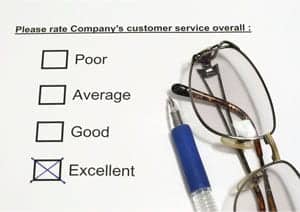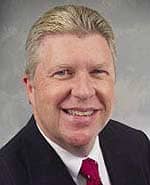
Modern businesses of all shapes and sizes struggle with the challenge of trying to build long-term value while simultaneously adding to the bottom line. Every organization that is held accountable to a budget while delivering some kind of product or service must face that dichotomy, and the temptation to sacrifice value for dollars can be intense. Those who work in health care witness this battle to some degree every day, and clinical/biomedical engineering departments are anything but immune to economic pressures.
In spite of that pressure, biomeds must still deliver quality service—for the sake of their own departments, the clinical professionals that they serve, and, ultimately, the patient. Like many large companies today, clinical/biomedical engineering departments are rediscovering strong customer service as one of the few activities that can increase value and benefit the bottom line at the same time.
There is, however, one important difference between biomedical departments and most companies out there—the size and accessibility of their target markets. Competition for customers in the open market has become so intense that it has spawned an entirely new business discipline—customer relationship management—and has organizations scrambling to learn the latest and greatest methods for gaining and keeping customers.
Biomeds, on the other hand, have a captive audience. Instead of millions of customers spread out all over the globe, or even tens of thousands across a region, the typical biomedical department serves a few thousand at the most, all within the confines of the hospital walls. So providing top-notch customer service should be like shooting fish in a barrel, shouldn’t it?
Don Peppers is a best-selling author and member of the Accenture Top 50 Business Intellectuals, and he specializes in writing about customer service. With co-author Martha Rogers, PhD, in their book, Rules to Break and Laws to Follow, How Your Business Can Beat the Crisis of Short-Termism, he writes, “Customer trust can be destroyed all at once by a major service problem, or it can be undermined one day at a time, with a thousand small demonstrations of incompetence. Either way is effective.”
Customer Service Defined
In order to avoid the kind of fate that Peppers and Rogers describe, clinical engineering professionals need to understand the importance of customer service. But first, providing first-rate service requires an understanding of what customer service really is.

“Customer service is what we can do to make the customer’s day better,” says Alex Jordan, director of biomedical engineering with Aramark Healthcare, who provides full-time biomedical support services at Hilton Head Hospital, SC. “It causes you to ask, ‘How can I transition your concerns, problems, and difficulties from you to me?’ It says, ‘We’re here for you.’ ”
Another Aramark biomed, Beverly Corne, is a CTS front line manager for the 86-bed Pender Memorial Hospital in Burgaw, NC. As the only full-time biomedical staff at Pender, she wears a lot of hats, but Corne tries to stay focused when it comes to providing excellent service.
“Customer service for me means keeping my customers—hospital staff—informed of their equipment repairs, maintenance, and end-of-life issues. Also letting them know what’s new out there for replacing existing equipment. Basically, trying my best to meet all their needs as far as equipment is concerned.”
From a customer service perspective, being small has its advantages. “I interact quite a bit with hospital staff every day,” Corne says. “Because of our size, I see everyone pretty regularly. It definitely helps to just keep my face in front of everyone.”
High quality staff interaction is key, according to James Cross, BS, CBET, clinical engineering manager at Riverview Hospital, Noblesville, Ind. “This job is probably 80% customer service,” Cross says. “You can repair everything really well and be the technically smartest biomed in the world, but if your customer service is poor, nobody’s going to want to call you.”
Of course, in the biomedical world, defining the customer is not as straightforward as it might seem.
“My customers are the clinicians, but the real customer is the patient. In effect, I’m helping my customer help my end customer,” Cross says.
Jordan breaks customers down into two distinct camps. “A customer is either internal or external,” he says. “Internal is everyone in the biomed shop and the hospital staff. An example of an external customer would be vendors who ask for our assistance.”
Creativity Is Key
In addition, each facility has its own distinctive biomedical challenges, so cookie-cutter techniques won’t always work. Unique problems require creativity from the biomedical staff.
For example, Cross recently wanted to improve his responsiveness to staff in the hospital’s surgical areas, but those areas would be prepping for surgery while the rest of the hospital was still asleep—and the biomed staff had yet to clock in. So, he adjusted to them.
“I expanded my hours from 8:30 am to 6 am,” Cross says. “I assigned two staff members to the surgical areas in the mornings. They check off on the anesthesia machines, and while the nurses are setting up, my guys are there. It’s been very beneficial for them.”
Jordan and his staff felt the need to provide a well-deserved break for clinicians—especially those in more demanding areas like surgery and the emergency department. “During the summer, every week we have ‘Biomed Beach Bum Friday’ where all the biomeds have matching tropical shirts and we have a bunch of fresh-made cookies,” Jordan says. “Everyone who stops by biomed gets some free cookies and a plastic Hawaiian lei. It’s a great way to break the ice with hospital staff and get to know them. We run out of cookies every time!”
Back to Basics
While thinking out of the box can generate some very creative customer service ideas, others can be found in the more common biomed routines, and still others outside the biomed department’s walls.
Jordan found that participating in multidisciplinary activities has also helped build bridges. “I participate in new employee orientations,” he says. “I have a window during the presentation to tell them who biomed is so that person then knows the face behind the e-mail or the phone when an equipment issue comes up.” And when he hires new biomed staff, he will go with them to the new employee luncheon in order to introduce his rookie staff members to other clinicians within the hospital.
For Corne, going beyond the basics should not be overlooked. “The other day, a nurse’s hole punch wasn’t working and she asked me if I could fix it. So I did. Little things like that show customers that you’re willing to go the extra mile to make their day better—and it’s easy to do.”

Corne even uses regular reports as an opportunity to provide value-added service. “I send out monthly reports to the departments that list their equipment history—what work has been completed that month,” she says. “But if they have some equipment that needs to be replaced, I’ll go online or ask people in my field what’s out there and send that information along to them as well. I also attend the North Carolina Biomedical Association meeting every year to keep up with the vendors and see what’s new out there.”
Jordan agrees that going the extra mile is helpful, and is willing to go out of his way to find answers for clinicians even if they’re not specific to biomedical engineering issues. “Establishing communication is first and foremost—it all starts with communication,” he says.
It’s About People, After All
When it comes to communication, Cross emphasizes that it’s a two-way street. “One of the most important skills that a biomed can have is being able to listen to what your customer is saying and understanding their situation,” he says. “Communication is very important, but it’s not just about talking.” Cross urges biomeds not to use a lot of technical jargon when speaking with physicians and nurses, but to make subjects understandable without being condescending.
Corne adds that it is too easy sometimes to blame clinicians for equipment maladies, and that jumping to conclusions can poison the customer service well. “If they say a piece of equipment isn’t working properly but it checks out OK, you should take that information and say, ‘It’s working OK now, but tell me what it was doing when you had a problem with it,’ ” she says. “Interact with them in a way that takes the extra step and doesn’t make them feel like they’re the problem. Give them the feeling that you care about what they’re going through and their frustrations. ‘You must not have been doing it right,’ is not a good response.”
Making rounds of the clinical floors offers a great opportunity to listen, ask a lot of questions, and try to empathize with clinical staff.
Jordan views rounds as a way to build confidence, trust, and rapport. “The hospital staff is definitely aware that biomed can get the answer to their specific problem, even if it’s not a problem that we typically handle,” he says, adding that his department conducts regular customer service surveys, which helps his staff visualize the fruits of their labor.
Cross encourages his staff to engage clinicians when conducting routine pump runs in order to make sure all their other equipment is operating correctly and to help solve any problems that they might be having.
The key is to be as flexible as possible with routine procedures, according to Corne. “Having to wear so many hats can be distracting,” she says. “It’s difficult when you’re in the middle of completing monthly reports and someone suddenly needs something fixed. If it’s something that needs to be taken care of right then and there, then take care of it. If not, then tell them you’ll get to it just as quickly as you can. To me, that’s the biggest obstacle to providing good service—you just have to prioritize.”
Happy Customers Equal Happy Biomeds
Finding a good balance between productivity and service can be difficult, but is important for maintaining biomedical staff morale.
Cross posts staff response times, and discusses their challenges and successes in staff meetings.
“We’re supposed to call back within 5 minutes of a page,” Cross says. “Our goal is to get there as fast as we can.”
He also recently consolidated two physically distant biomed shops into one, which adds some walking to each staff member’s day, but it pays dividends in other ways. “The staff can communicate better, they know what’s going on throughout the hospital, there’s a lot more synergy, and they’re bonding more as a team,” Cross says. He found that since the consolidation, response times actually improved in spite of sometimes larger physical distances. “When they have a good time working together, it shows in the quality of their work,” he says.
Jordan has also seen significant customer service benefits by investing in his staff. “We have a monthly departmental meeting where I’ll assign specific issues from the clinical staff to members of my team,” he says. “Any feedback that I get will be passed along to them, and then we’ll talk about what worked or how we can do it better next time.”
Public acknowledgement of staff successes has helped Jordan build morale and cross-pollinate good customer service ideas among his team. “When someone goes above and beyond the call of duty it kind of reverberates to the rest of the staff,” he says.
Jordan adds that ongoing training is also important for providing good customer service, and highlights the resources available through Aramark. “There are online modules available for different kinds of customer situations—how to break the ice, how to be a better listener, how to be an effective communicator,” Jordan says. “Aramark Healthcare does a fantastic job offering training for specific customer service skills.” He attributed that training to helping one of his biomed technicians calm a hostile patient situation a couple of months ago, and afterward the technician was thanked by a grateful hospital staff.
A Rule to Remember
At the end of the day, what is the most important customer service rule to remember?
|
Find more customer service tips in the June 24×7 Soapbox. |
“Reliability,” Jordan says. “If you make a commitment to a customer, whether you have the answer to the immediate problem or not, then help the customer get the answer and hold yourself accountable to that. I firmly believe that if you promise the customer the sky and can only deliver the horizon, then you’re setting yourself up for failure. Be careful what you promise.”
“Keep the customer informed, keep them updated, keep them in the loop,” Corne says. Ultimately, she likes to rely on a rule that’s quite a bit older than the concept of customer service itself. “Treat them the way you want to be treated. That’s the key.”
Kent Lupino is a contributing writer for 24×7. For more information, contact .




